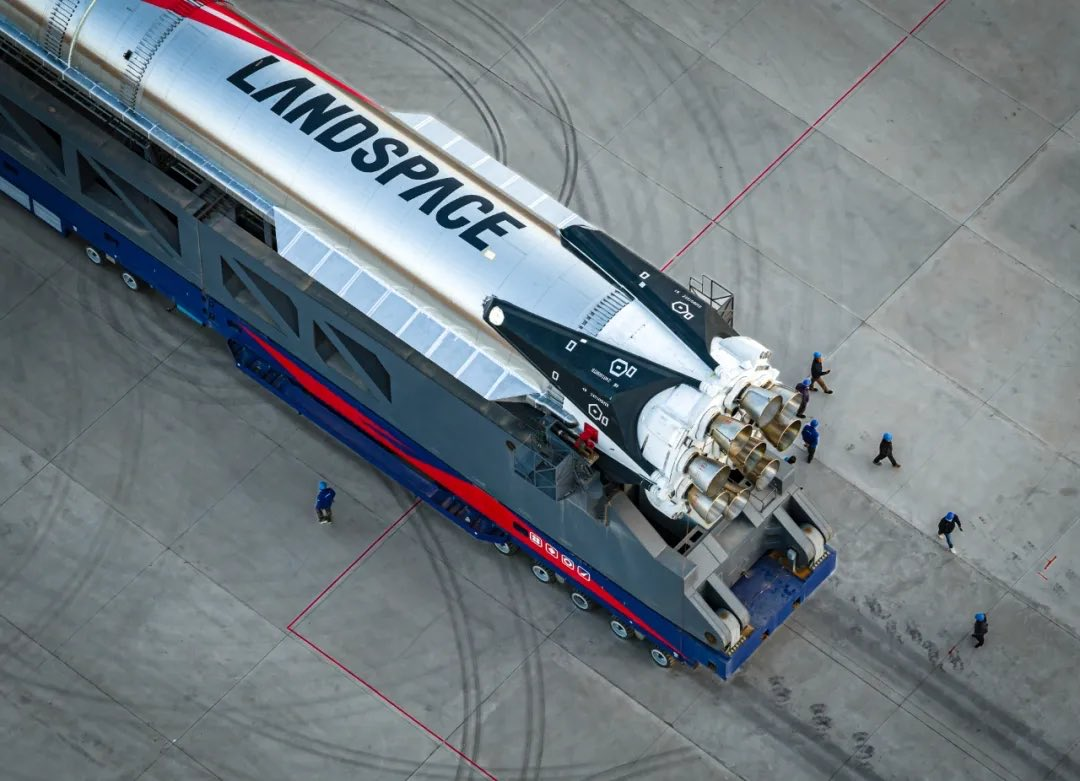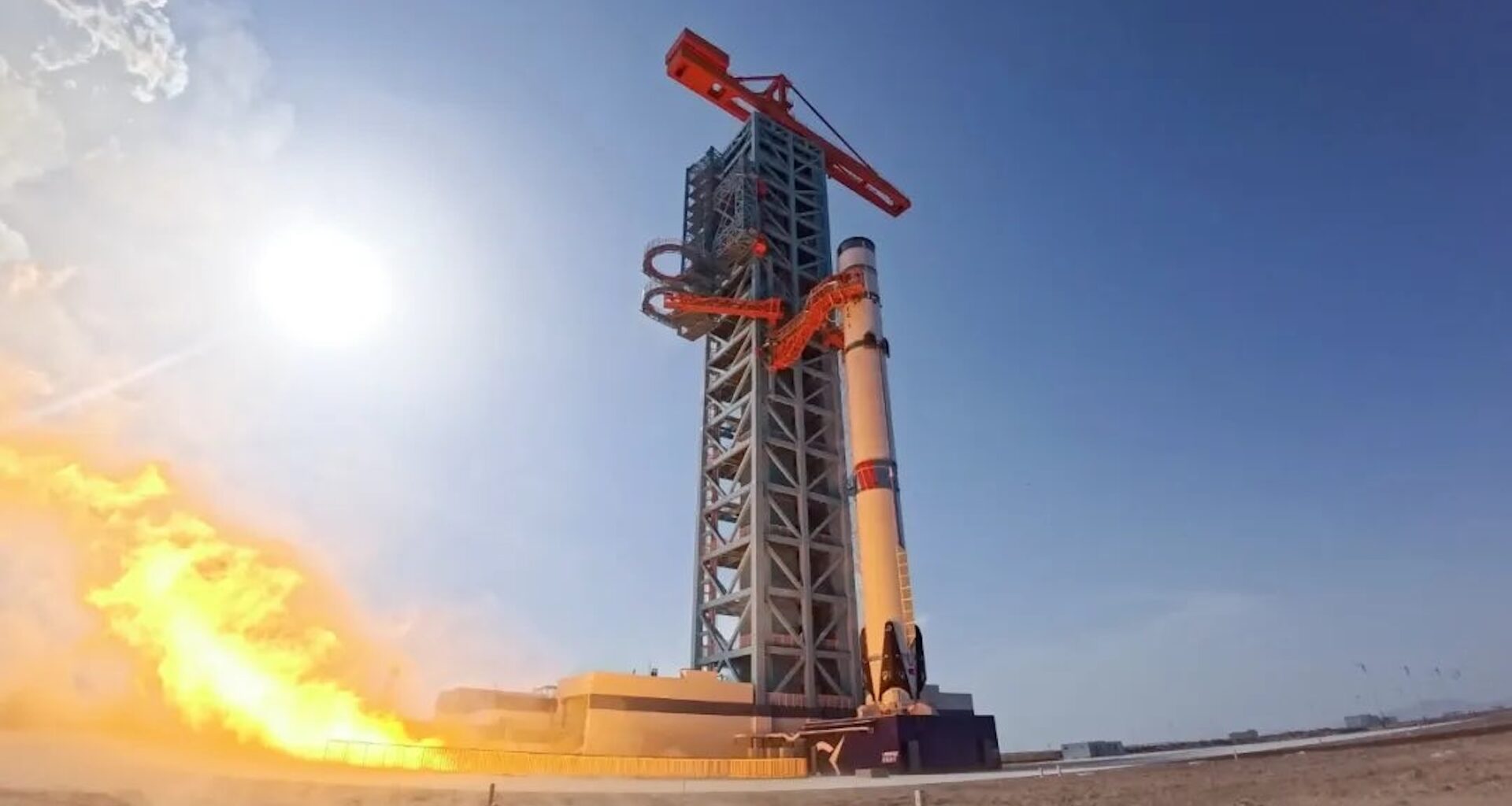China’s private space industry is evolving at a dramatic pace, as it continues to strive to take on Elon Musk’s SpaceX.
In a new development, Chinese rocket firm LandSpace conducted a key static fire test on its Zhuque-3 rocket this Monday, October 20.
If all goes to plan, the launch of Zhuque-3, China’s first reusable rocket, is just a few weeks away, as LandSpace aims to fly its stainless steel launcher before the end of the year. It’s another strong indicator that China’s space industry is ready to challenge the best of the US.
Landspace’s last engine test before launch
Static fire tests are typically one of the last tests ahead of launch. During these engine tests, the rocket is anchored to the ground. The rocket engine is put through its paces, without lifting off from the launch pad.
LandSpace conducted the static fire test at the Dongfeng Commercial Space Innovation Pilot Zone in northwestern China. The engine test was part of the “first phase” of LandSpace’s Zhuque-3 maiden flight campaign. This phase also included a fueling test.
“The vehicle will next proceed with planned vertical integration rehearsal, before returning to the technical zone for inspection and maintenance in preparation for its upcoming orbital launch and first-stage recovery,” LandSpace said in a post on X, this Monday.
 An image of Zhuque-3 being rolled to the launch pad. Source: LandSpace / X
An image of Zhuque-3 being rolled to the launch pad. Source: LandSpace / X
LandSpace’s Zhuque-3 is a 217-foot-tall (66 meters) launch vehicle capable of lifting 40,350 lbs (18,300 kg) of payload to low Earth orbit (LEO). That’s only a little less than SpaceX’s Falcon 9, which has a payload capacity of 50,265 lbs (22,800 kg) to LEO.
Zhuque-3 takes many cues from the prolific Falcon 9 rocket. Both are two-stage rockets with a reusable first stage and an expendable upper stage. Much like Falcon 9, Zhuque-3’s booster is powered by nine proprietary engines. LandSpace’s Tianque-12A engine uses methane and liquid oxygen propellants.
China’s rising private space industry
China’s private space industry is looking to emulate SpaceX’s success by flying reusable rockets to orbit. Beijing-based Space Pioneer, for example, became the first startup to reach orbit on its first attempt in April 2023.
LandSpace, meanwhile, has successfully flown its expendable Zhuque-2 rocket to orbit four times after one failure on its first attempt in December 2022. Its latest launch in August also ended in failure. Zhuque-2 was the first rocket using methane-liquid oxygen propellant to reach orbit.
In September 2024, Landspace performed a launch and landing flight test of Zhuque-3, which reached an altitude of 6.2 miles (10 kilometers). In June, it performed a separate static fire test, firing its nine Tianque-12A engines for 45 seconds.
China’s space industry is progressing at a dramatic rate. SpaceX CEO Elon Musk has previously suggested that China’s space industry is at an advantage due to a less stringent regulatory process. While this has allowed Chinese space companies to iterate on designs rapidly, some high-profile accidents have also occurred in recent years.
Space Pioneer arguably had the most disastrous static fire test of all time last year. The company accidentally launched a rocket stage into the sky when it was supposed to be anchored to the rocket pad. The rocket crashed onto a nearby mountain shortly after launching into the air.
